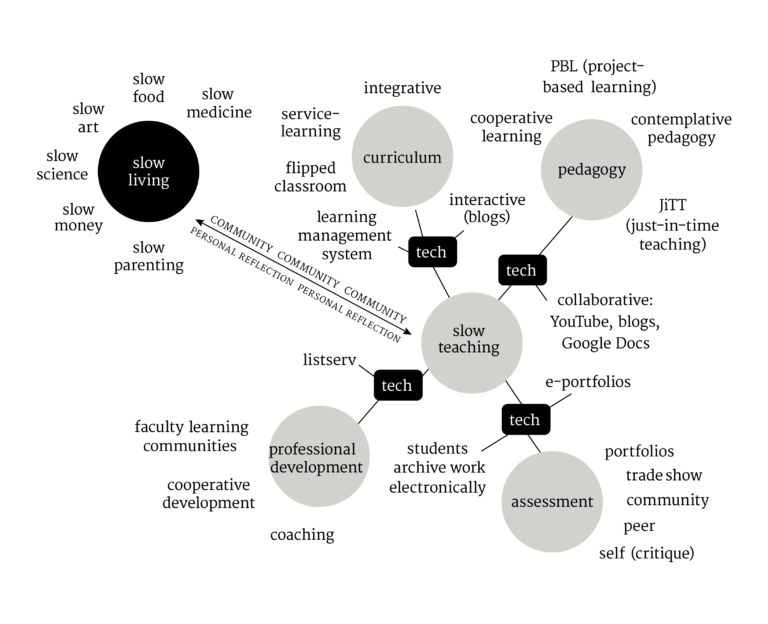Getting from A to B
Pacing, Complexity & Hurricane Carol

A person’s first exposure to an academic course can be daunting. As an instructor, this will be you the first time you teach it. It will be your students on their first day of class. A glance at the course calendar will not help. In typical fashion, the weeks of the semester roll on with huge amounts of reading and epic level assignments. On paper, or in your syllabus, it can appear a daunting task: How exactly do you impart the knowledge of your course content to students in the short time period that a semester spans? Do you throw them in the deep end and hope they swim? Or is there a way to scaffold success.
One method is to begin with simple tasks and skills, relative to your course, that build on small victories. Later in the semester you introduce more complex tasks and increase the responsibilities of the students as learners and content creators.
Tasks can be simplified by breaking them into parts. If you’d like to teach a particular skill that depends on something more complicated, provide an in-progress sample that already has parts of the work done. The same kind of work can be revisited later with the more competent student having to take on a larger number of tasks until they can complete everything on their own.
It’s a well-known method in physical training that if you want to be able to lift a certain weight, you train by adequately lifting smaller amounts of weight. Recovering, and then adding more and more weight until your muscles adjust and grow capable of the lift.
Cognitively and socially, Vygotsky first observed that people are able to complete tasks in groups with mentoring that they would otherwise be incapable of doing alone.1 This ‘zone of proximal development’ (ZPD) as he called it, is a range of skills and tasks that students can accomplish with just a bit of help from peers. Carefully constituted peer groups can foster the perfect ZPD for your students.
In May 1954, Roger Bannister ran a sub-four-minute mile in Oxford, England. During the previous fall, across the Atlantic, my father, under the tutelage of my former boxing coach grandfather, ran a measured mile in approximately 3:45 minutes. My father’s ZPD was extended to a huge extent by Hurricane Carol, which blew on his back for the rainy jaunt down Route 107 across Rumney Marsh. What did this accomplish? My father developed a sense of confidence and belief in the possible. While he never ran under four minutes again, he never placed second in the mile either.
The point is that, given the correct training wheels, your students can accomplish amazing feats. It is often the case that they just need to be shown this themselves.
Up to this point I’ve talked about making things safe for your students, allowing them to slowly build up skills and apply them to challenging tasks. This approach is often appropriate for lower level classes and younger students.
What about using fear as a motivational tool? As Peter F. Drucker once noted, “No one learns as much about a subject as one who is forced to teach it.’2
Consider divvying up projects and reports to students in groups and have them be responsible for presenting to their peers. Many students dislike this approach, because it forces them to work in groups. But, it also forces them to understand what they are presenting. In order to succeed they can’t be passive. This approach requires you to outline expectations and responsibilities, but has multiple positive benefits.
Learning doesn’t have to be a steady monotonous pace of unit divided material digested week after week.
Knowledge can be gained in inciteful aha moments or adrenaline-laced periods of preparational dread. You’re the maestro. Begin with ‘lento’, build to ‘andante’, pause to smell the flowers and appreciate progress while observing ‘adagio’, then finish it off with ‘vivace’. Your students will not forget your course.
1 Zone of proximal development. (n.d.) Wikipedia.
2 Drucker. P.F. (n.d.) Quotable Quote.



